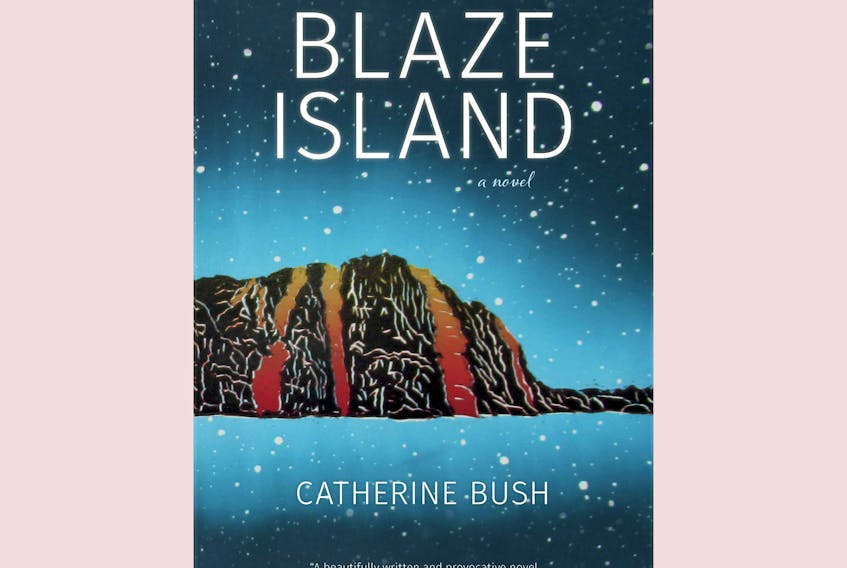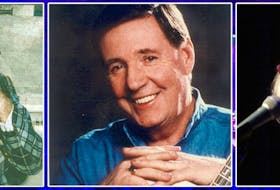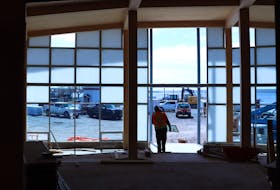An isolated island. An emotional and complex father. A lonely yet resilient girl. Themes of exile and strange weather.
“Blaze Island” is Catherine Bush’s take on “The Tempest.”
No harm or shame in that — steal from the best — borrow the structure, the crisis, even some of the character names, and adapt the material to your own ends. (It’s also reminiscent of E. Annie Proulx’s “The Shipping News,” with a slight magic realism take on Newfoundland, and a tinge of John Wyndham’s “The Chrysalids,” set in a post-Tribulation Labrador.)
It opens, of course, in a storm.
“On Blaze Island, they were too far north for most hurricanes, but the ocean water was warming.” Teenage Miranda and her father, “who went by the name of Alan Wells,” settle to a game of gin rummy. Their hatches are battened, their abode self-sufficient in terms of stores, light, and heat.
Then a stranger washes up on their bridge. At some peril they rescue him from the extreme winds and rain, and manage to haul him inside, where he “lay, a lime-green anorak slick against him. Cold water streamed across Miranda’s skin, her hair heavy as a pelt on her back. Stunned excitement flew through her. Her father shook himself the way a dog will after a fight, the room still too full of wind for speech, his skin shining. The stranger closed his eyes. Was he hurt, was he badly injured, dying? The clasp of his hand left his trace on hers. Miranda knelt beside him.
“‘Don’t touch him,’” her father warns.
The young man gives his name as Frank Hansen.
From this pivotal, anchoring event, the story drifts back eight years. We learn that Alan was “appointed first director of the new Climate and Cryosphere Center” in Princeton, NJ, fiercely battling to bring awareness to climate change, even as he fears, to the point of his own mental balance, that it is too late to cope with it. Targeted by climate change deniers, and silenced by his university, he also faces the sudden loss of Jenny, the celebrated visual artist who was his wife and Miranda’s mother. It’s is too much. He takes his then 10-year-old daughter and flees.
They drive, they take a ferry, they drive some more, they take another ferry. When they finally fetch up on Blaze Island Alan sinks into a depression, to Miranda’s fear and concern.
But in time he emerges to plan and adapt.
He also swears Miranda to silence concerning anything of their history, including his real name. And Miranda is not to leave the island, even when invited by locals to join them on periodic grocery trips to Gander. (Neither will he, though his research once took him all over the globe.) At first he also homeschools her, although she manages to change his mind about that. She doesn’t have much in common with the other girls at school, but she needs some socialization and they don’t bully her.
Alan is determined to keep them off the grid.
They will generate their own power, and what they can’t grow or forage themselves they can source locally. For example, one neighbour, Sylvia, keeps goats and has milk, yogurt, and cheese. And her son Caleb is a jack of all trades.
Caleb and Miranda had become as close as siblings, but in present day something has happened and “the old man,” as Caleb always calls him, has forbidden him from seeing her.
At the same time Alan keeps Caleb employed on his intricate and mysterious project codenamed ARIEL. He has also summoned an assistant, Norwegian scientist Anna Turi, and later one of his former students, Agnes Watson of Nain, suddenly joins them.
“‘Why are you here?’ (Miranda) asked Agnes, unable to help herself.
“Agnes said, ‘I study black carbon. All the particulate matter in the snow cover, all the dust that travels north through the air from forest fires and industry in the south and darkens the snow surface when it falls.’ Which wasn’t exactly an answer.”
Most clinching, in the wake of the storm, a private jet with a pilot and three passengers arrive.
Alan is weaving all this together, into a climax of retribution.
Bush made several research trips and writing sojourns to Fogo (“when I was still in search of an island, some good spirits pointed me in the direction of Tilting,” she writes in her Acknowledgements), and made careful note of many cultural details.
So is she, like Proulx, deliberately misrepresenting NL names and terms, for example here by substituting “Yes boy” for “Yes b’y?”
They’re really not equivalent (and anyone who needs a reminder of the incredible linguistic flexibility of “Yes b’y” must watch Sue Kent’s brilliant take on Billie Eilish’s “Bad Guy,” courtesy “This Hour Has 22 Minutes” https://www.youtube.com/watch?v=sZNaQXNkI0I).
Just one thread in the tapestry. Also the cover, featuring Christine Koch’s “Voice of Fire IV,” is gorgeous.
Joan Sullivan is editor of Newfoundland Quarterly magazine. She reviews both fiction and non-fiction for The Telegram.









